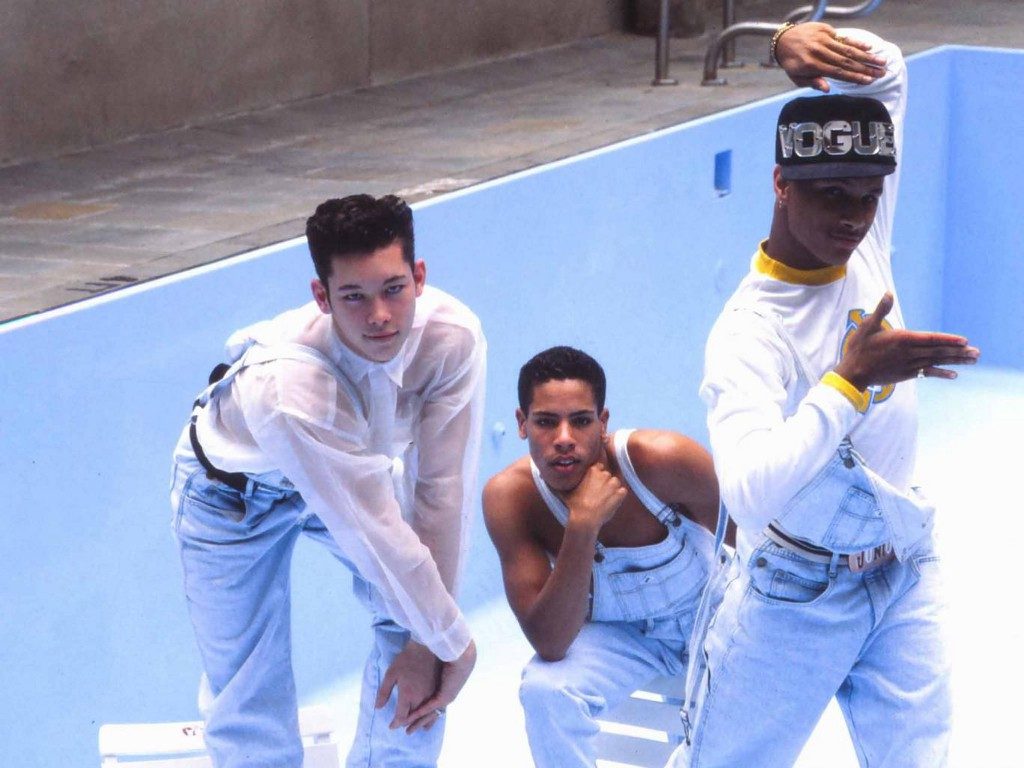Ester Gould has been directing her own documentaries for Dutch public broadcasters since 2005. Her first feature-length documentary, “Shout,” jointly directed with Sabine Lubbe Bakker and shot in Syria and the Israeli Golan Heights, won the prize for Best Film at the London International Documentary Film Festival in 2010. “A Strange Love Affair with Ego” (2015) — her second feature documentary — premiered at IDFA and won the award for Best Dutch Documentary and an EDA Award for best female-directed film from the Alliance of Women Film Journalists. (Press materials)
“Strike a Pose” will premiere at the 2016 Tribeca Film Festival on April 15. The film is co-directed by Reijer Zwaan.
W&H: Describe the film for us in your own words.
EG: “Strike a Pose” is about Madonna’s fierce male “Blond Ambition” dancers whose life-changing journeys were captured in the film “Truth or Dare.” The dancers became paragons of pride and inspired people all over the world to “express yourself.”
But behind the scenes and after the tour the dancers were struggling with their own compromising secrets and feelings of pride. The film is ultimately about overcoming shame and daring to be who you are. Although much has changed for the better since the early 90s, it’s still hard. Probably because deep down, we all want to belong.
W&H: What drew you to this story?
EG: When my co-director Reijer Zwaan told me about this idea he had to find out what had happened to the “Blond Ambition” dancers, I immediately thought it was a brilliant film idea. The idea of focusing on them made so much sense. It was exciting because it promised to be about life, not about Madonna.
When we met the dancers during our research trip, their life stories were above expectation because there’s something cathartic about what they have been through. I love coming-of-age stories and this film is partly about growing up because these flamboyant kids had gone through a lot.
They are older, wiser and still so much fun. There’s something to learn from them about embracing who you are, embracing reality. I also find shame and pride fascinating emotions and these are important themes in the film.
W&H: What do you want people to think about when they are leaving the theater?
EG: I hope they are touched by the dancers’ strength, and that they are inspired to overcome shame because I think shame is an emotion that holds a lot of people back. The film acknowledges how hard it is to be true to yourself but the film is also an encouragement to dare.
W&H: What was the biggest challenge in making the film?
EG: The biggest challenge was the edit: How do you balance seven stories and blend them into one? The dancers are all very different people with different stories to tell. We had to find the common ground. Structuring the film was difficult because editing a film like this is like a really hard game of chess.
W&H: How did you get your film funded? Share some insights into how you got the film made.
EG: The film was funded by Dutch cultural funds, the Belgian film fund and various European broadcasters. But before we got all the funding in place, we needed to shoot a large part of the film. To make that happen, we organized a fundraising dinner. So it began with small-scale, exclusive crowd funding. In total it took about three years to make.
W&H: What’s the biggest misconception about you and your work?
EG: I’m not sure if there are any! The biggest misconception about me personally is that I’m a workaholic, which isn’t quite true because I love to just hang around.
I have a reputation for pushing everything, including crew and time, but I think that has a purpose. Filmmaking is all about asking just that little bit more from people in front of and behind the camera — pushing it without overdoing what you can ask from others.
W&H: What’s the best and worst advice you’ve received?
EG: The best advice I ever got is to follow my intuition and to be daring. Don’t try to please everyone because that leads to too much compromise.
I also got good advice from director Heddy Honigmann, who I assisted for years. You never stop researching and thinking — even when you’re way into production, don’t stop being critical. Keep on asking yourself what’s still missing.
The worst advice I’ve received comes from people who give you the solutions to your films. [Instead of telling you what the answer is,] they should ask the right questions.
W&H: What advice do you have for other female directors?
EG: To follow your intuition and be daring — and to believe. A lot of creativity is killed by all the people who have their own agendas. You might have to work with them and you should listen [to what they have to say,] but never try to please everybody.
W&H: Name your favorite woman-directed film and why.
EG: Heddy Honigmann is an acclaimed documentary filmmaker who was also my own private mentor. Her work is beautiful because it’s always comforting and life-affirming.
Her films are a celebration of life and although I personally have a soft spot for tragedy and hardship, I love how she always has a kind eye for humanity — for our ability to overcome, to love and to survive.







